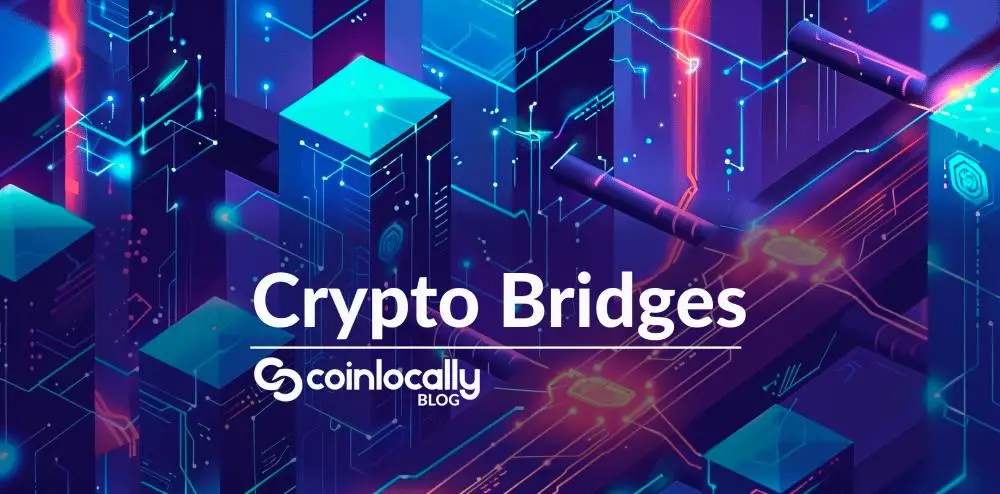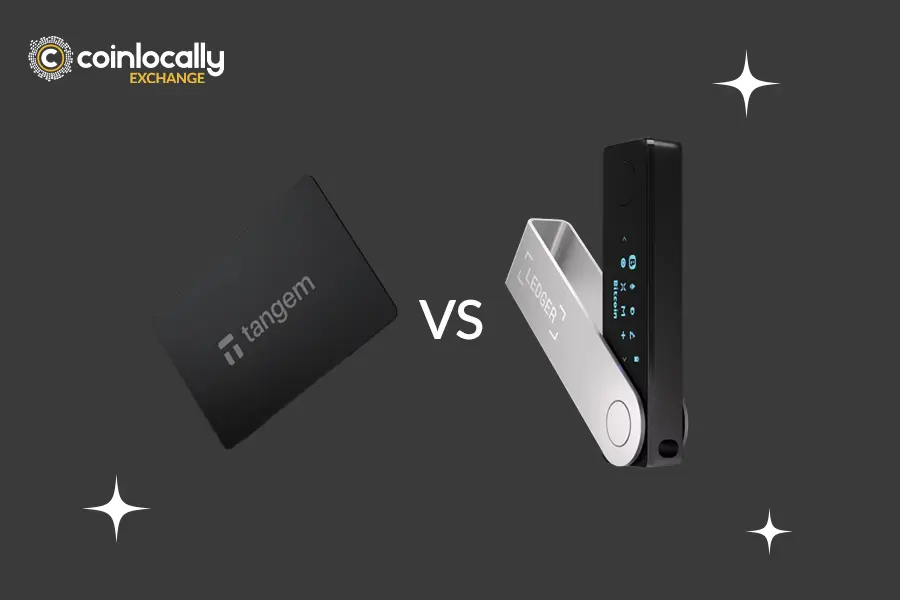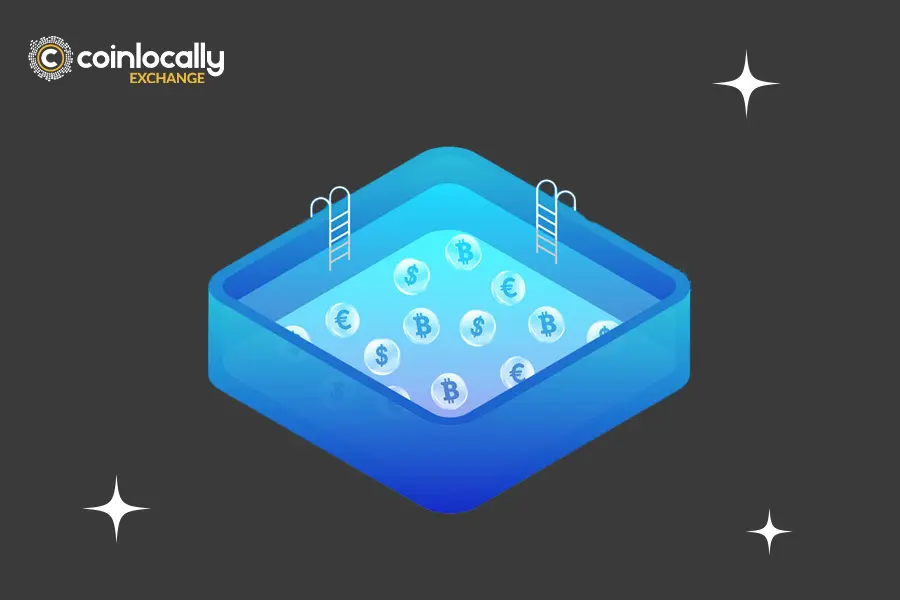Each blockchain ecosystem performs based on its own rules and standards. Crypto bridges are connecting tools to enable interoperability, allowing assets and data to flow between blockchains. But how does bridging work in crypto? Here is all you need to know about how a crypto bridge works and its benefits and risks.
Table of Contents
What Are Crypto Bridges?
To answer the question, “How does bridging work in crypto?” we first need to understand what bridges are and the types they have.
Crypto bridges are protocols designed to connect two or more blockchains, enabling the transfer of assets, data, or smart contract instructions across different networks.
They come in different types to streamline interoperability, letting users use the features of various blockchains.

Types of Bridges
Here are the four main kinds of bridges in the crypto world, with blockchain bridge examples.
- Custodial bridges, like the Binance Bridge, are managed by centralized entities, which increases trust but also increases the risk of centralization.
- Non-custodial bridges, like Wormhole Bridge, operate using smart contracts to provide decentralization and trustlessness.
- Unidirectional bridges, like Wrapped Bitcoin (BTC to Ethereum), allow asset transfers only in one direction.
- Bidirectional bridges, like Avalanche Bridge, enable two-way asset transfers between blockchains.
Bridging is much more than data transfer. Let’s learn more about its benefits in crypto.
The Benefits of Bridging
- Interoperability: Connecting blockchain ecosystems enhances functionality.
- Scalability: Bridging reduces network congestion by moving assets to faster blockchains.
- Cost Efficiency: Bridging can decrease transaction fees by using less congested networks, which are cheaper.
- Accessing DeFi: Bridging can expand access to decentralized applications across different chains.
Despite these valuable benefits, bridging can include some risks.
The Risks of Bridges
- Smart Contract Vulnerabilities: If there are coding flaws, the risks of exploits increase.
- Centralization Risks: Some bridges rely on custodians, meaning they are not fully decentralized, which can cause trust issues.
- Liquidity Concerns: Bridging can cause liquidity issues because limited liquidity can cause delays or more costs.
- Regulatory Challenges: Using various blockchains can be challenging because you must follow multiple rules and comply with different regional requirements.
We need to understand the role of smart contracts in bridging, which is another factor helping us answer the question, “How does bridging work in crypto?”
The Role of Smart Contracts in Bridging
Smart contracts are the essence of non-custodial bridges because they lock assets on the source chain and mint equivalent tokens on the target chain with security and transparency.
Now that we know the basics, let’s answer, “How does bridging work in crypto?”
How Does Bridging Work in Crypto?
To use bridging in the crypto world, you just need to select a bridge, connect your wallet, and choose the asset and its amount. Here is the whole process:
- Select a bridge that supports the blockchains you want (e.g., Ethereum to Avalanche).
- Connect your wallet to the bridge interface.
- Choose the asset and amount you want to transfer.
- The bridge locks your assets on the source chain.
- Equivalent tokens are minted on the target chain.
- Tokens appear in your wallet on the target chain.
We have provided a list of popular crypto bridges to help you find the best one for your needs and strategy.
Popular Crypto Bridges
The most popular crypto bridges are
- Wormhole
- Avalanche
- Polygon
- Binance
Wormhole Bridge
Wormhole is a decentralized cross-chain bridge that connects multiple blockchains and facilitates asset transfers.
It supports popular blockchain networks, including Solana, Ethereum, Terra, Binance Smart Chain, and more. For example, you can transfer USDC or other assets from Ethereum to Solana to use Solana’s low fees and fast transactions for DeFi applications.
The key features of the Wormhole Bridge include:
- High-Speed Transactions: Wormhole leverages the speed of Solana’s blockchain, handling up to 65,000 transactions per second (TPS), providing almost instantaneous transfers.
- Security: Wormhole Bridge uses a network of validators to transfer assets securely.
- Versatility: It supports bridging tokens, NFTs, and other blockchain assets.
- Growing Ecosystem: Wormhole works with DeFi and NFT platforms to increase cross-chain functionality.
Avalanche Bridge
The Avalanche Bridge (AB) connects the Ethereum network with Avalanche, facilitating the process and improving the cost-efficiency of transferring assets between these ecosystems.
This bridge is made explicitly for Ethereum and Avalanche and only supports these blockchains. For example, you can swap ETH for AVAX and use Avalanche’s lower transaction fees for gaming or DeFi applications.
The Avalanche Bridge offers low fees, a user-friendly interface, high TPS, and wrapped tokens.
- Low Fees: Avalanche has lower transaction fees than Ethereum’s gas fees.
- User-Friendly Interface: Avalanche Bridge’s dashboard for swapping tokens is easy and enjoyable, which is helpful for both beginners and experienced users.
- High Transaction Throughput: Avalanche’s architecture enables rapid transactions finalized within seconds.
- Supporting Wrapped Tokens: Assets transferred to Avalanche are wrapped as Avalanche-compatible tokens, so they don’t lose value.
Crypto Bridge: Polygon Bridge
The Polygon Bridge links only Ethereum and the Polygon networks, letting users move assets between the two ecosystems efficiently and cost-effectively.
For example, you can move stablecoins from Ethereum to Polygon to use Polygon’s low transaction fees for farming and staking.
Polygon Bridge includes the following main features:
- Speed and Cost-Effectiveness: Thanks to Polygon’s layer-2 scalability solutions, transactions through the Polygon Bridge are faster and cheaper than on Ethereum’s mainnet.
- Plasma Bridge: Polygon offers two types of bridges. Its Plasma Bridge provides more security but supports only certain token types (e.g., MATIC, ETH, ERC-20, ERC-721).
- PoS Bridge: Its second bridge is PoS, a more general-purpose bridge that supports more tokens and is faster but slightly less secure than the Plasma Bridge.
- DeFi Integration: Polygon Bridge is used by decentralized exchanges and lending platforms on Polygon, so you can easily migrate liquidity.
- NFT Bridging: You can transfer NFTs between the Ethereum and Polygon networks.
Binance Bridge
The Binance Bridge is a multi-chain bridge developed by Binance to connect Binance Smart Chain (BSC) with other blockchain ecosystems, such as Ethereum.
It aims to provide high liquidity and compatibility for asset transfers. For example, you can convert Ethereum-based assets to BSC to access Binance’s DeFi ecosystem with lower fees and higher scalability.
Binance Bridge has the following key features:
- High Liquidity: Using Binance’s strong liquidity pools, you can transfer large amounts of crypto assets.
- Broad Asset Support: Binance Bridge can bridge various assets, including ERC-20 and BEP-20 tokens.
- Cross-Chain Interoperability: The Binance Bridge makes transferring tokens between BSC and Ethereum easy, making it an essential tool for DeFi and DApp users.
- Fast Transfers: Transactions are completed in minutes, increasing efficiency for users who need quick cross-chain transfers.
| Bridge | Supported Blockchains | Pros | Cons |
| Wormhole | Solana, Ethereum, Terra | High speed, scalability | Smart contract risks |
| Avalanche | Ethereum, Avalanche | Low fees, user-friendly | Limited blockchain support |
| Polygon | Ethereum, Polygon | Cost-efficient, secure | Limited interoperability |
| Binance | Multiple chains | High liquidity | Centralized structure |
Here is how you can use a crypto bridge to use the features of both blockchain networks.
How to Use a Crypto Bridge?
Take the following steps to use a crypto bridge:
- Choose a bridge for your target blockchains.
- Connect your crypto wallet.
- Select the token and amount.
- Confirm the transaction and pay fees.
- Wait for the assets to appear on the target blockchain.
The Future of Crypto Bridging
The future of bridging depends on advancements like cross-chain communication protocols and decentralized interoperability solutions.
These innovations can improve bridging speed and security while remaining fully decentralized, helping the blockchain ecosystems operate as one massive network.
Conclusion
Crypto bridges are essential in increasing blockchain interoperability. If we choose the right bridge and understand the process, we can enjoy the features of cross-chain transactions.
As blockchain technology develops, bridging will become an essential and valuable tool for blockchain ecosystems. So, it’s important to learn how to use bridging in crypto.




